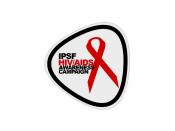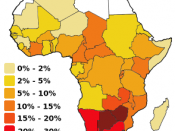Kenya is an east African country named for Mount Kenya, the second-highest mountain in Africa. Over 30 million people live grouped into more than 70 ethnic tribes. Eight out of ten Kenyans live in rural areas, mostly farmers in dispersed settlements rather than villages. The remaining population is concentrated in the urban areas of Nairobi (the capital) and Mombassa. Ethnic division, drought, poverty and AIDS account for many of Kenya's problems. With one of the highest rates of population growth in the world, exacerbated by recurring drought, Kenya no longer is able to feed itself and imports large quantities of food. Food for the Hungry began working in Kenya in 1976 and runs many long-term devel. Continued needs for sponsored children such as school fees, uniforms, healthcare, cleaner water for all centers and training. Providing to approximately 20,000 beneficiaries in 13 communities through: Solving problems synergistically with other FH programs.
Educating youth about AIDS.
Assisting high school students in Bible study. Rehabilitating school buildings. Training community leaders in church development. Meeting water needs of communities with acute water shortage. Price fluctuations and lack of marketing centers hurt the livestock industry, from which over 75 percent of the Marsabit district makes its living. The program will benefit 74,000 people in nine communities by: Providing pastoralists with radios for communication. Emphasizing conflict management between pastoralists and farmers. Training church leaders to educate cattle-rustling gangs to become local support groups. Training community-based animal health workers. HIV/AIDS pandemic is eating at the fabric of Kenyan society and is directly affecting the social and spiritual life of the people. To enhance the capacity of churches, community leaders and families to initiate and strengthen HIV/AIDS prevention and control interventions for seven communities (approximately 50,000 people) by: Focusing on behavior change in order to...



Very touching
Very touching, I think that this makes you feel sorry for the people in Kenya.. keep up the good work.. I think that you would do good if you went on some kind of tour to help these people. Good job!!
0 out of 0 people found this comment useful.